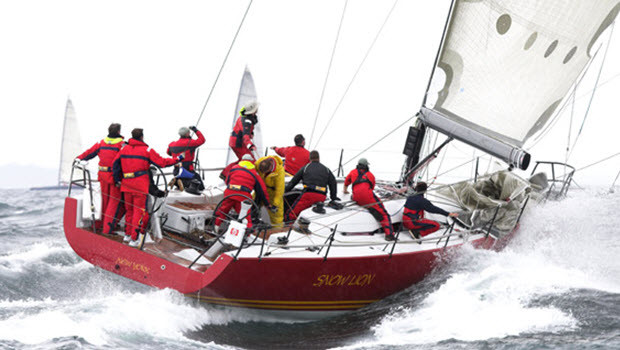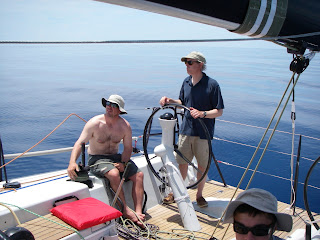IN 2005-2006 LARRY HUNTINGTON BUILT A 50 FOOT JASON KER DESIGN AT NEB. LAUNCHED FOR THE 2006 BERMUDA RACE IN WHICH WE WON OUR CLASS.
Category: jason ker
TRANSATLANTIC RACE 2003
This race was the second longest race I ever sailed. The start was once again in Newport, finishing in Hamburg, Germany. The course took us north of Ireland, Scotland and north of the Orkneys. Our time was 18 days 19 hours; I believe. Like every transatlantic race there are so many anecdotes that are associated with the race.
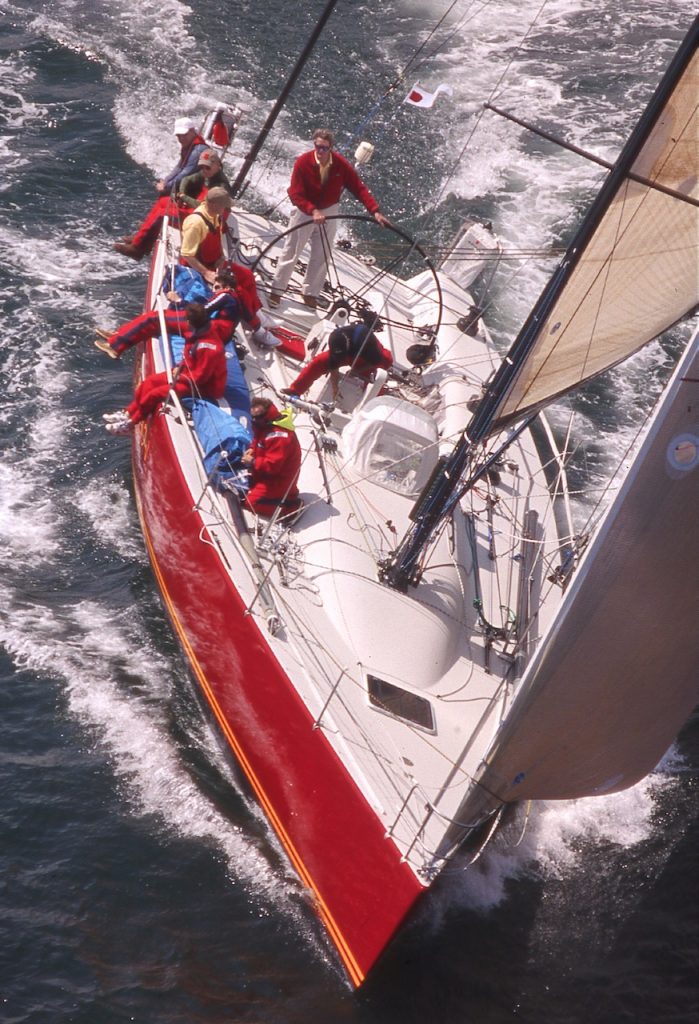
LONG DISTANCE SAILING
I have raced Dinghys, Big Boats around closed courses with bouys. I enjoyed it enormously. Distance racing is another thing altogether. You use what you learned around the bouys; this is where you are close to other boats and can tell if what you change is right or wrong. in the Ocean you have to have confidence that your choice is the right one. It is unlikely that there will be another boat against which to measure you choices.
I have raced across the Atlantic 9 times. the video below is the last race I sailed; and the quickest crossing ever; for me. I still smile at the memories evoked by the images. In order to have achieved this crossing we had a number of 300+ mile days.
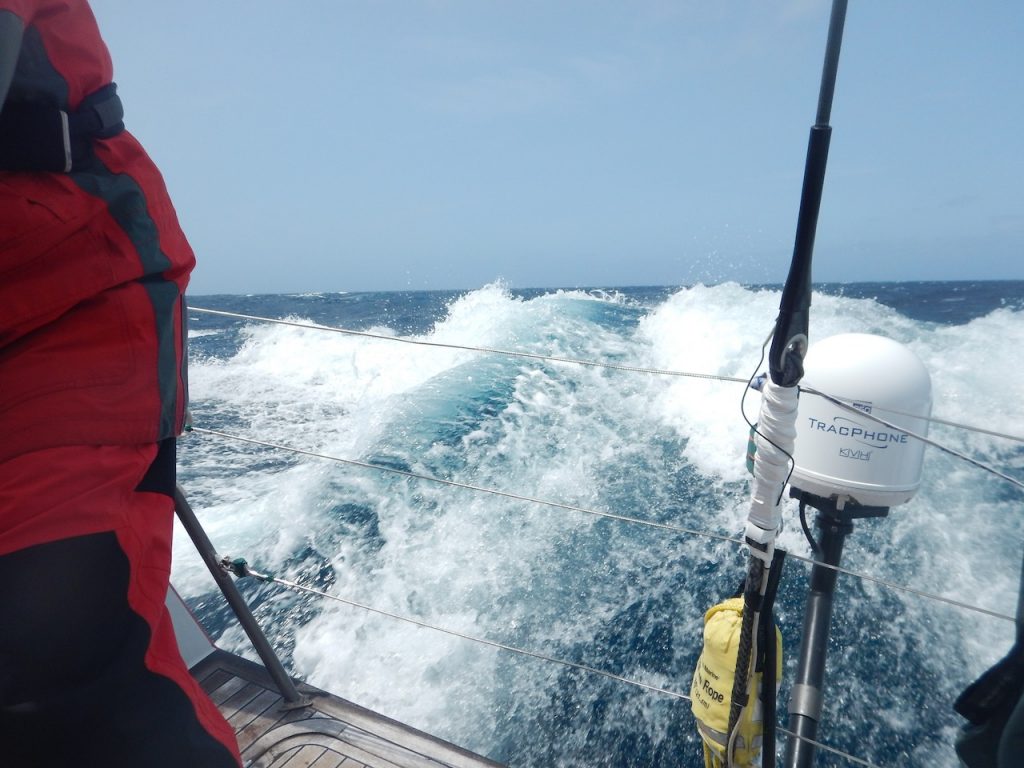
BETTER BE GOOD AT KEDGING, LIGHT AIR FASTNET
ELAINE BUNTING
The challenge on this year’s Rolex Fastnet Race will be coaxing yachts around the course in ultra light winds
Skippers preparing ready for the Rolex Fastnet Race 2015 on Sunday were warned that it could be a slow race with very light winds ahead. “If you really want to win this race you are going to have to be good at kedging!” joked Eddie Warden Owen, CEO of organisers the Royal Ocean Racing Club.
A record number of 370 yachts will set off from Cowes on Sunday on the 604-mile classic to the Fastnet Rock lighthouse and back to Plymouth. During its 90-year history the race has seen some intense and stormy weather, but this year it promises to be quite the opposite, with some of the lightest forecasts ever seen.
Ian Walker, skipper of the victorious Volvo Ocean Race team Abu Dhabi Ocean Racing, also joked about the weather ahead. “There is another isobar approximately in Iceland,” he said.
But the fleet this year includes some of the world’s fastest monohulls and multihulls, which are capable of making enough speed to set off a virtuous circle of apparent wind. These include the 100ft supermaxi Comanche, the big MOD70 trimarans and the 40m trimaran Spindrift 2.
Kenny Read, skipper of Comanche, says: “I don’t think any of us do very well in absolutely no wind, but we all have to play the same game. Whatever the breeze is we just have to adapt. Certainly dragging around a boat with a seven metre-plus beam in very light air is no fun.”
But he did admit that, in flat water, Comanche does only need five knots of true wind to get going.
Learn more about the headlands and tidal gates that are make and break on the Fastnet Race.
While the forecasts are making predicting finish times a bit of a nightmare, this is another indication of the potency of these big machines. Spindrift’s likely elapsed times in these conditions, as predicted on routeing software, is somewhere between 1 day 18 hours and 3 days 15 hours.
This race will also be a tough one for the new IMOCA 60s, especially those with the new L-shaped foils. These are great when power reaching, which is what they have been designed for as the optimal configuration for racing round the world, but they are draggy and reported to make more leeway in light conditions.
Morgan Lagravière, the skipper of Safran, who is new to the class but comes from a very strong Olympic 49er and Figaro background, admitted as much at this morning’s media briefing. “I’m not sure this year’s Fastnet will be for us. We will try to do our best. It will be very interesting learning how to use this new boat with the foils and to race with other IMOCA boats, especially Banque Populaire,” he said.
A large contingent this year is the two-handed crews. This is a growing area of offshore sailing, one that fits into a kind of sailing Enduro category. Some 59 boats in the IRC fleet are also sailing doublehanded. The lowest rated is Lucinda Allaway’s and Tom Barker’s Contessa 32 Hurrying Angel.
Like many of the smaller and lower yachts the Rolex Fastnet Race is most likely to favour them, as the breeze will pick up later in the week. Could this be a small boat year?
It is a year also when retirements could be lower than usual – the average is around ten per cent of the fleet. That would be good news for the event as a whole, and the Commodore of the RORC, Michael Boyd, concluded the briefing today by saying: “We are delighted that this is a record year and by the quality of the competition. There are a lot of fantastic sailors, who have put their effort, energy and money to be with us for this special race.
“We wish you all a very successful race and a safe passage.”
Read more at http://www.yachtingworld.com/blogs/elaine-bunting/youll-have-to-be-good-at-kedging-light-winds-endurance-ahead-for-rolex-fastnet-race-2015-66820#vrRt82RB41D4B5bt.99
MORE RIG TUNE AND VOLVO INSHORE
SAILING THROUGH LIFE
This is in response to those who asked:”Who are you?” It is a least a dimension.Boats have always been a part of my life. Naturally interwoven with the story of Newport.
TRANSATLANTIC 2015
transatlantic race 2011 from ws lirakis on Vimeo.
Offshore racing: All-consuming and enormously energizing
A lot has changed in offshore sailing since Larry Huntington first raced across the Atlantic in 1957. Advances in yacht design, construction and materials have made the boats exponentially faster and more durable. Modern communications enable boats to remain in touch with other competitors and the rest of the world throughout the nearly 3,000-mile journey. But the essence of the adventure remains much the same.
“Going across the Atlantic is a fantastic change of pace from everyday life,” says Huntington, who is a former commodore of the New York Yacht Club, which will co-host the race with the Royal Yacht Squadron, in association with the Royal Ocean Racing Club and the Storm Trysail Club.
“It’s a chance to think about what Joseph Conrad wrote about the mystery of the sea. ‘The true peace of God begins at any spot a thousand miles from the nearest land.’ All of that goes through your head as you do this kind of adventure. It’s a wonderful time for reflection. It’s also intensely competitive. I find it all-consuming and enormously energizing.”
So it’s no surprise, that more than a half century after his first trip across the Atlantic, Huntington’s 50-foot Snow Lion was one of the first boats to enter into the 2015 Transatlantic Race, which will start from Newport, R.I., in late June and early July of 2015 and finish at Lizard Point, on the southwestern corner of England.
With 15 months until the first gun is fired from Castle Hill in Newport, R.I., more than 20 boats have entered and nearly 70 others have expressed interest. The fleet for 2015 is expected to reach its limit of 50 boats, nearly double the 26 boats that competed in the race in 2011.
“We’re extremely pleased with the significant early interest in this race,” says Royal Yacht Squadron’s Rear Commodore Yachting David Aisher. “The history of the transatlantic race dates back to the birth of recreational ocean racing in the late 1800s. More than a century later, it remains one of the ultimate tests of yachting skill.”
This will be the third Transatlantic Race for Snow Lion, a 50-foot boat designed by Jason Ker and built in 2006. There is an adage that says distance racers should never sail on any boat that is shorter in feet than their age. Huntington, who will be 80 when the race starts, clearly doesn’t subscribe to that theory.
“I had seen some of Ker’s previous designs and admired how they behaved and looked,” says Huntington. “We kept losing races to other Ker designs, so I figured [building one for myself] was a good thing to do.”
In 2011, it took Huntington’s team more than 15 days to complete the course. While that race was notorious for light and challenging wind conditions, the transatlantic course is still one of the longest regular races open to amateur sailors.
“First and foremost, you need a really compatible, competent crew,” says Huntington of the keys to success. “If you have full confidence in your shipmates, everyone gets the proper amount of rest and then you can address whatever Mother Nature wants to throw at you.”
Race website: www.TransatlanticRace.org
– See more at: http://www.sailingscuttlebutt.com/2014/04/01/offshore-racing-consuming-enormously-energizing/#sthash.NO8bexoc.dpuf
Bermuda Race 2006
 2006 was the debut of the new Jason Ker 50 foot ‘Snow Lion”; launched only weeks before the Bermuda Race. We sailed the NYYC spring regatta and then off to Bermuda. It was a slow upwind race. We managed a class win and winning by the greatest margin in any class meant we earned extra silver.
2006 was the debut of the new Jason Ker 50 foot ‘Snow Lion”; launched only weeks before the Bermuda Race. We sailed the NYYC spring regatta and then off to Bermuda. It was a slow upwind race. We managed a class win and winning by the greatest margin in any class meant we earned extra silver.

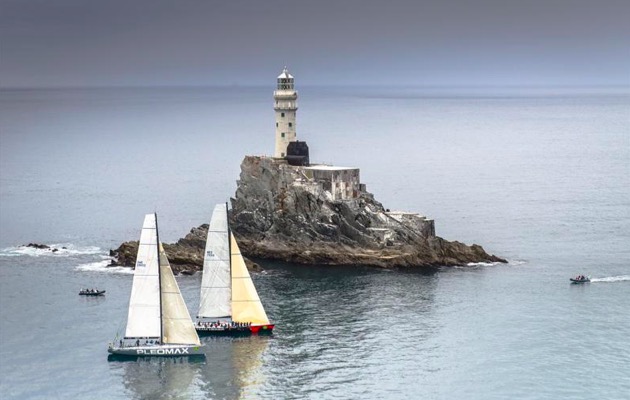
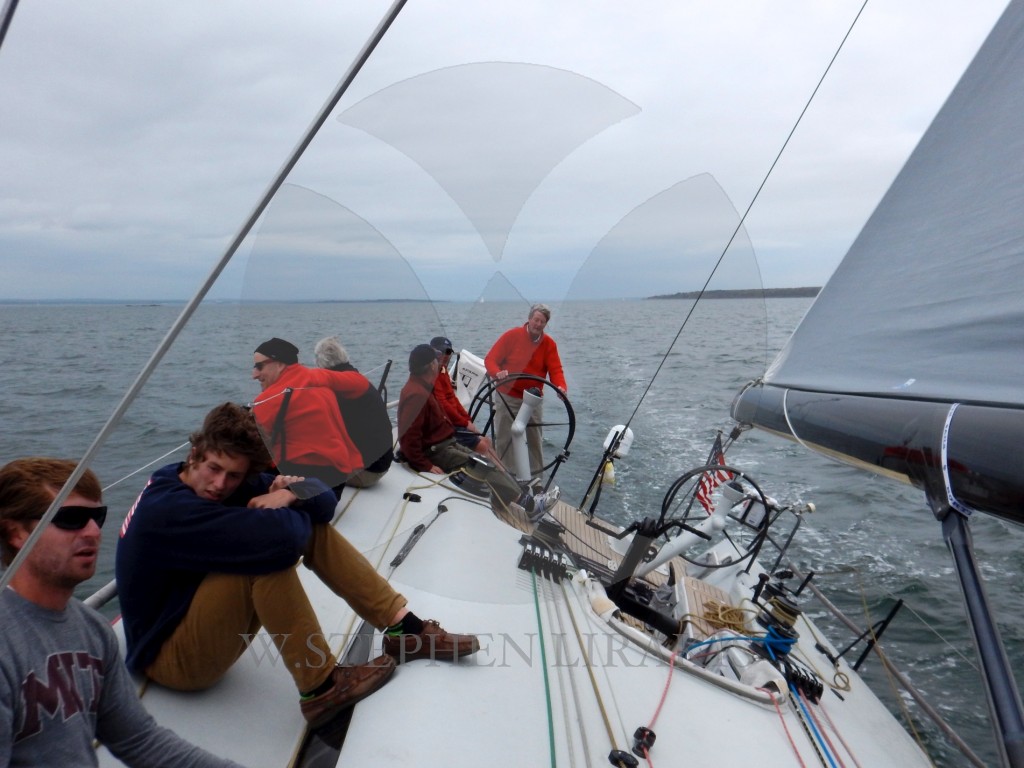
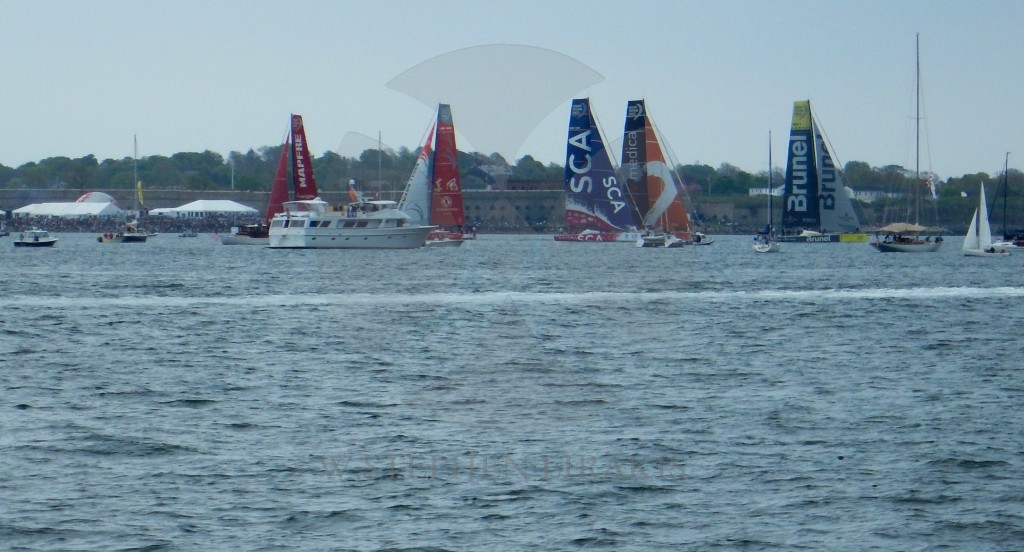
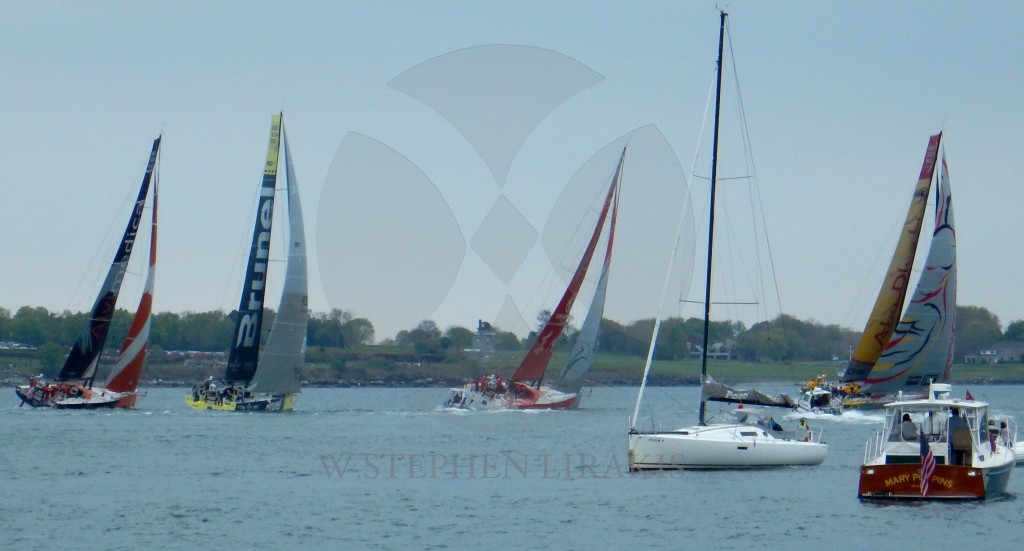
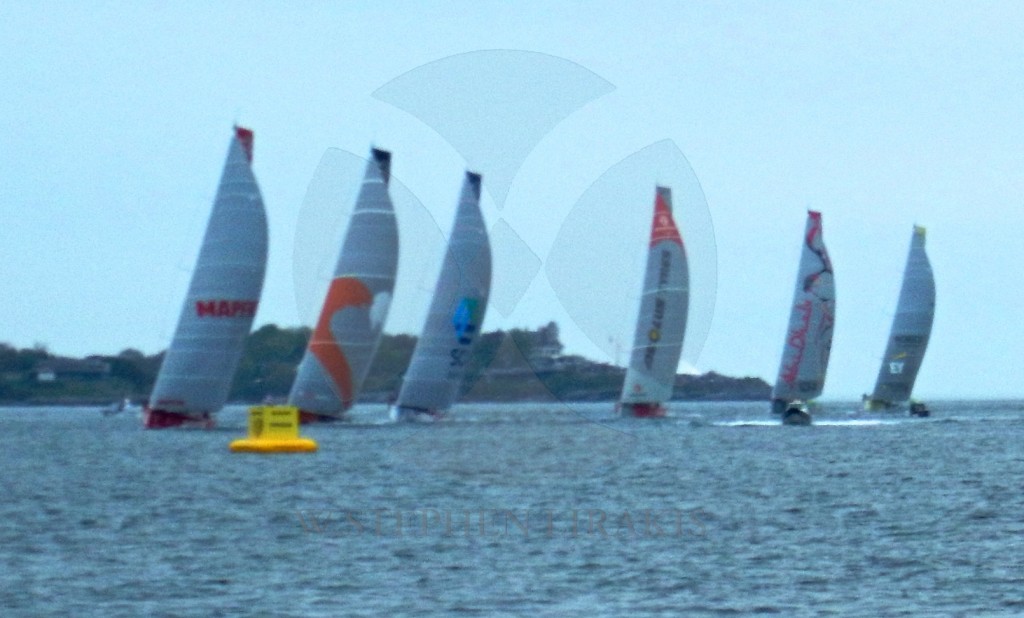
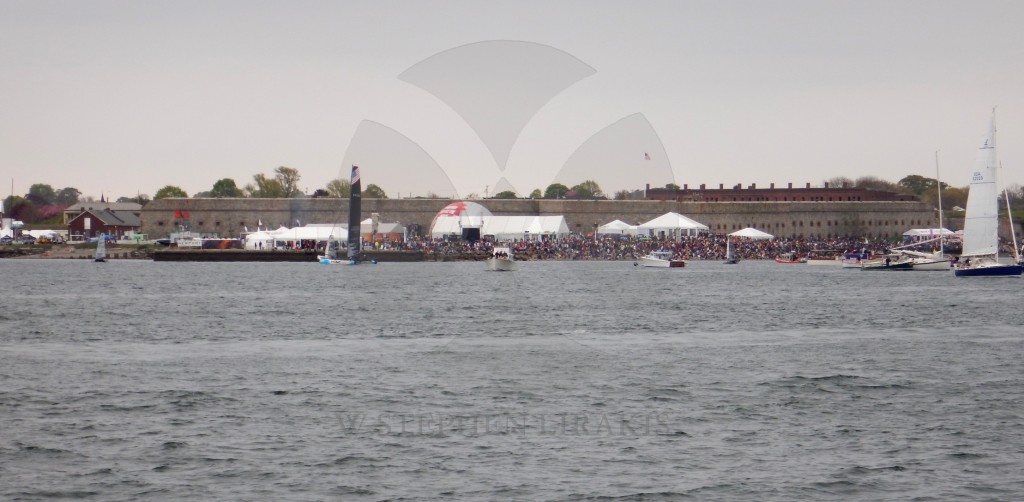 FT. ADAMS CROWDS
FT. ADAMS CROWDS